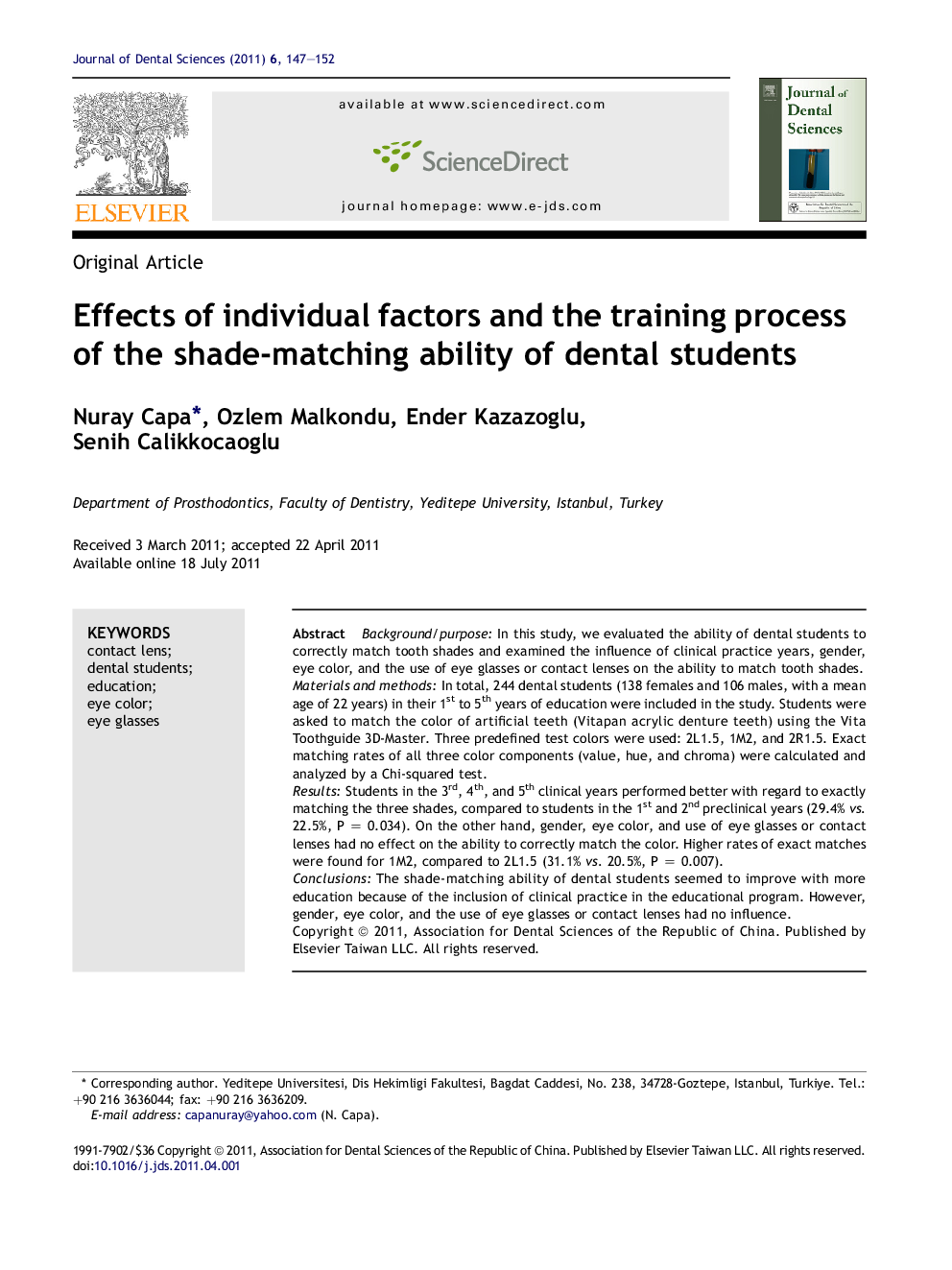| Article ID | Journal | Published Year | Pages | File Type |
|---|---|---|---|---|
| 3144872 | Journal of Dental Sciences | 2011 | 6 Pages |
Background/purposeIn this study, we evaluated the ability of dental students to correctly match tooth shades and examined the influence of clinical practice years, gender, eye color, and the use of eye glasses or contact lenses on the ability to match tooth shades.Materials and methodsIn total, 244 dental students (138 females and 106 males, with a mean age of 22 years) in their 1st to 5th years of education were included in the study. Students were asked to match the color of artificial teeth (Vitapan acrylic denture teeth) using the Vita Toothguide 3D-Master. Three predefined test colors were used: 2L1.5, 1M2, and 2R1.5. Exact matching rates of all three color components (value, hue, and chroma) were calculated and analyzed by a Chi-squared test.ResultsStudents in the 3rd, 4th, and 5th clinical years performed better with regard to exactly matching the three shades, compared to students in the 1st and 2nd preclinical years (29.4% vs. 22.5%, P = 0.034). On the other hand, gender, eye color, and use of eye glasses or contact lenses had no effect on the ability to correctly match the color. Higher rates of exact matches were found for 1M2, compared to 2L1.5 (31.1% vs. 20.5%, P = 0.007).ConclusionsThe shade-matching ability of dental students seemed to improve with more education because of the inclusion of clinical practice in the educational program. However, gender, eye color, and the use of eye glasses or contact lenses had no influence.
